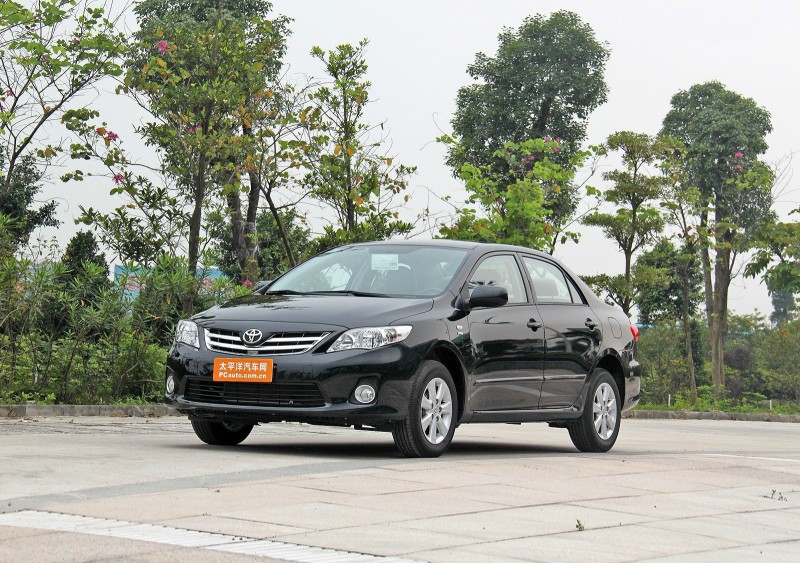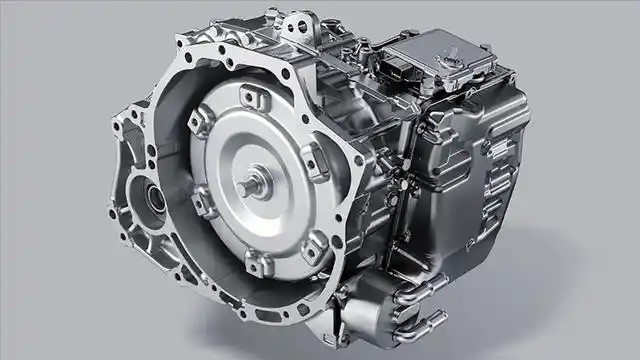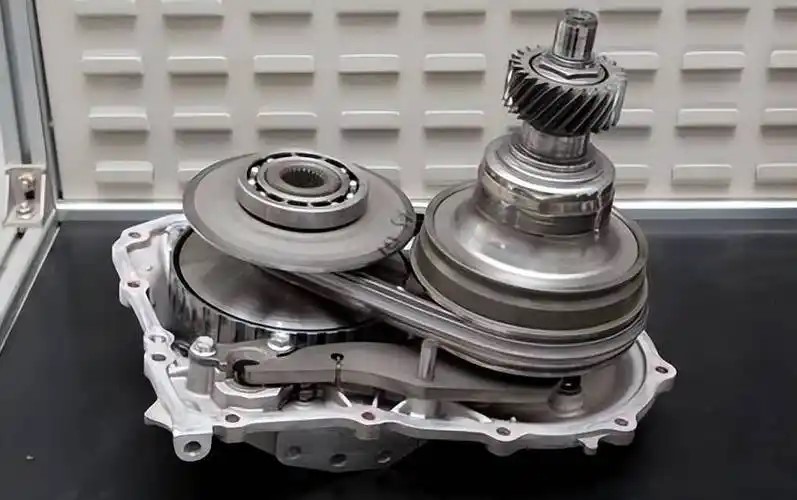4AT vs CVT, which is better?
 JamesMar 10, 2025, 02:34 PM
JamesMar 10, 2025, 02:34 PM
【PCauto】In today's automobile world, there are many members of the automatic transmission family. Common ones such as AT, CVT each meet the driving needs of different consumers with their unique performance. Next, let's focus on 4AT and CVT, and see which one is better.

4AT(Four-speed automatic transmission)
4AT, that is, four-speed automatic transmission, consists of a torque converter first taking the power from the engine and flexibly transmitting it to the planetary gear mechanism. The planetary gear changes the transmission ratio through different combinations, and under precise control of the hydraulic control system and the computer, it smoothly switches between four gear positions, allowing the vehicle to adapt to different driving speeds.
Its core structure is the planetary gear set, which is usually composed of multiple planetary gear sets. The planetary gears revolve around the central sun gear while interacting with the ring gear. With the coordination of the clutch and the brake, the planetary gear set can accurately achieve the connection or lock of different gear components to achieve a gear shifting effect. When the vehicle starts, the torque converter buffers the power impact; while driving, the hydraulic system controls the clutch and the brake according to the vehicle speed, throttle and other signals to complete the gear shift.
4AT technology is mature, has undergone many years of practical test, and its reliability is extremely high. The maintenance system is complete, so even if a fault occurs, it can be easily repaired; the shift smoothness is good, although the number of gears is limited, the jerkiness during gear switching is weak and not easily noticeable.
However, the disadvantages of 4AT are also quite obvious. The lack of gears makes it difficult for the engine to operate efficiently for long periods of time, resulting in low fuel utilization and high fuel consumption; a complex structure coupled with a heavy torque converter, lead to its weight bias, increasing vehicle energy consumption and maneuverability difficulty; high research and development and manufacturing costs have restricted its popularization in economical vehicles.

CVT(Continuously Variable Automatic Transmission)
CVT uses a steel belt to connect two pulleys of variable diameter, and its working principle is similar to a continuously variable pulley group. By dynamically changing the pulley diameter, the transmission ratio is continuously adjusted to ensure that the power output of the engine always matches the vehicle's driving needs. Compared with 4AT, it breaks free from the constraints of fixed gears, allowing the engine to always operate in an economical and efficient range, greatly improving fuel economy.
The basic structure of CVT includes a steel belt and metal belts, which are divided into driving and driven pulleys. The steel belt runs flexibly between the two. When accelerating, the diameter of the drive pulley decreases, and that of the driven pulley increases, increasing the speed; conversely, when decelerating, the whole transmission process is continuous and seamless, and the power transmission is smooth.
CVT has excellent fuel economy. With continuously variable transmission ratio, the engine can accurately match the speed of the vehicle, effectively reducing fuel consumption; power transmission is as smooth as flowing water without traditional gear switching jerk, providing a quiet and comfortable driving experience; the structure is compact and simple, taking up less space, aiding vehicle layout optimization, and freeing up more space in the car.
However, CVT is not perfect. During high-load driving, the steel belt may slip, causing power loss and transmission efficiency not as good as 4AT; due to the lack of rhythm feeling in gear switching, it diminishes some driving pleasure for those drivers who enjoy control and are accustomed to manual shifting.

4AT vs CVT
4AT, when driving at a steady medium to high speed, can achieve a high efficiency with mature gear transmission, but under comprehensive conditions, due to fewer gears, the engine often deviates from the high efficiency zone; although CVT enables the engine to maintain high efficiency, the steel belt transmission may lose power under high load, and each has its advantages and disadvantages. In terms of fuel economy, CVT excels with its continuous variable transmission ratio, whilst 4AT is relatively worse. In terms of power transmission, 4AT gear shifts have slight jerks whereas CVT is incredibly smooth.
Therefore, they are used in different types of vehicles. 4AT is commonly seen in earlier low-end models and some off-road vehicles, admired for its reliability and certain off-road gear adaptability; CVT is widely used in family cars that pursue comfort and fuel economy. In terms of urban road performance, CVT is smooth and fuel-efficient, and its advantage is fully shown in frequent starting and stopping; 4AT is slightly clumsy and has higher fuel consumption.
Driving a CVT is easy and tranquil, and although 4AT is traditional, it has a mechanical gear-shifting feel. For daily use, CVT is both fuel-efficient and worry-free, while 4AT has a wide maintenance network and easy-to-find parts. In terms of maintenance cost, the initial cost of 4AT is high, but long-term maintenance is relatively stable due to mature technology; if key parts like the steel belt of CVT fail, the replacement cost is considerable.

It's hard to say whether 4AT or CVT is absolutely better, we need to choose based on our most common driving scenarios. In urban commuting scenarios, CVT is undoubtedly the first choice, it is fuel efficient and comfortable with frequent start and stop; For highway driving, if you pursue extreme stability and durability, 4AT has advantages, but CVT can also handle normal cruising.
In conclusion, both 4AT and CVT have their own strengths and weaknesses, there is no absolute winner. 4AT, with its deep technical accumulation and reliable performance, stands firm in specific fields; CVT, with its outstanding fuel economy and driving comfort, has become a hot topic in the family car market. The choice between the two requires considering many factors such as vehicle use, driving style, budget and post-maintenance.
If any infringement occurs, please contact us for deletion
Trending News

2025 Toyota Aqua Released, Fuel Efficiency 35.4km/L, More Worth Buying Than Corolla
[PCauto] Against the backdrop of the global automotive market's continuous transition toward electrification, the Toyota Aqua, as a compact hybrid model from the brand, has always been renowned for its high efficiency and practicality.The 2025 Toyota Aqua has been officially unveiled recently, drawing market attention once again with multiple technological upgrades and high fuel efficiency.This model is built on the TNGA-B platform, achieving a new breakthrough in fuel consumption performan

Zeekr 9X will be launched in China on August 29 and has attracted attention due to its resemblance to the Cullinan
[PCauto] Geely's premium electric vehicle brand Zeekr announced that its first luxury flagship hybrid SUV model, the Zeekr 9X, will officially start pre-sale in China on August 29, 2025.This full-size luxury SUV has attracted significant market attention for its resemblance to the Rolls-Royce Cullinan in appearance, as well as its luxurious interior design and high level of configuration.Zeekr 9X Positioned as a Full-Size Luxury SUVThe Zeekr 9X dimensions are 5239/2029/1819mm, with a wheelb

2026 Malaysia EV Road Tax Policy Analysis: Costs and Opportunities After the End of Exemptions
As December 31, 2025, approaches, electric vehicle owners in Malaysia will face a significant policy turning point — the four-year electric vehicle road tax exemption policy is coming to an end. Starting from January 1, 2026, all electric vehicles will be subject to an annual road tax based on a new power-based tiered tax system. This change marks a transition for Malaysia's electric vehicle market from a policy-driven phase to a new stage of market-oriented development, bringing new considerations for both consumers and the industry.

The fifth-generation Geely Emgrand car photos released, with upgrades in body size and power system
As a family sedan with cumulative sales exceeding 4 million units in China, the new generation Emgrand will further consolidate Emgrand's competitive position in the sedan market through stronger product capabilities.

BMW's all-new iX3 to be unveiled on September 5, built on the Neue Klasse platform
[PCauto] BMW recently released a teaser image, announcing that the all-new generation BMW iX3 pure electric SUV will have its global debut on September 5, 2025. This model will become the first mass-produced vehicle built on the Neue Klasse platform and marks a crucial step in BMW's electrification transition.The all-new iX3 not only achieves comprehensive upgrades in exterior design, interior technology, and power performance but also targets the global pure electric SUV market, directly co
Popular Cars
Car Compare
Model Year
car model

